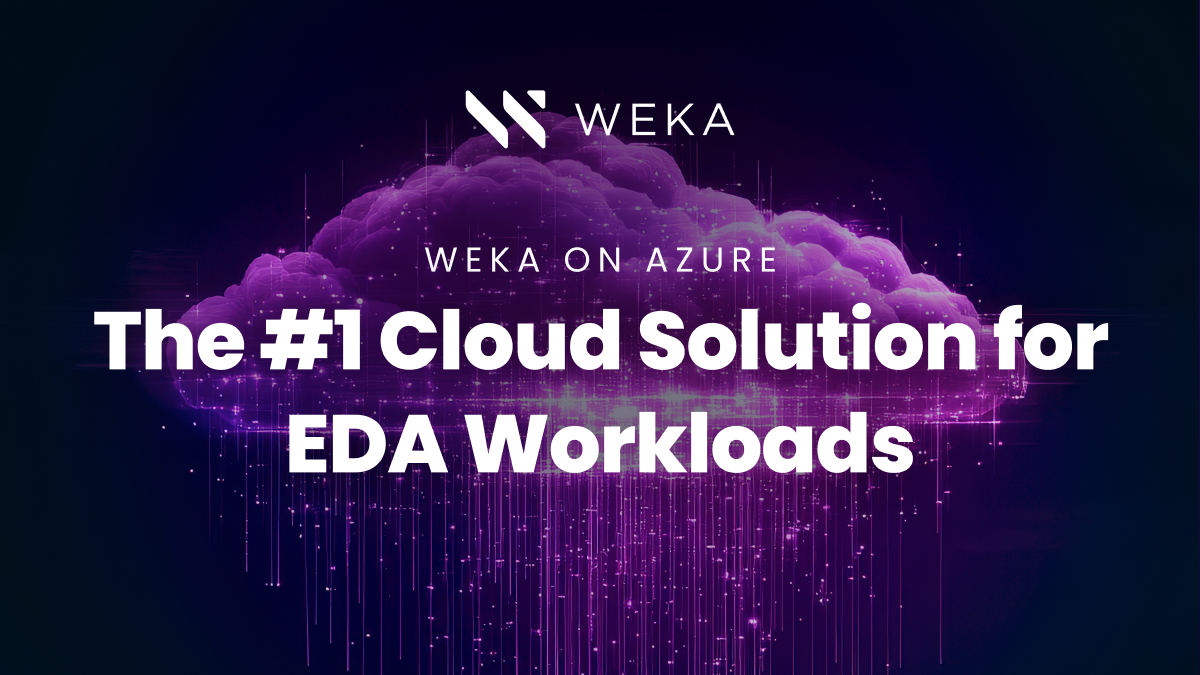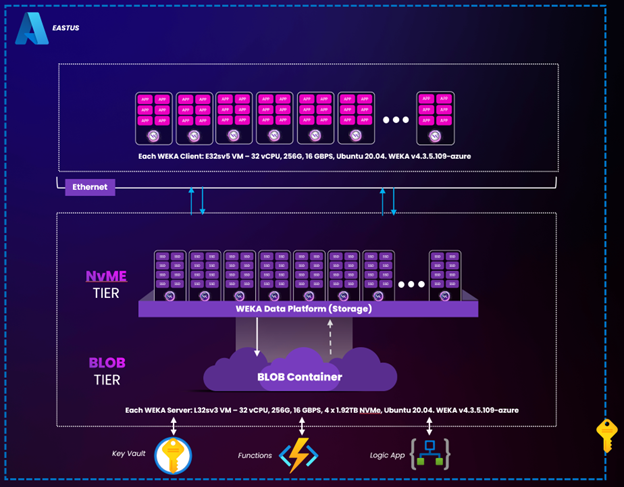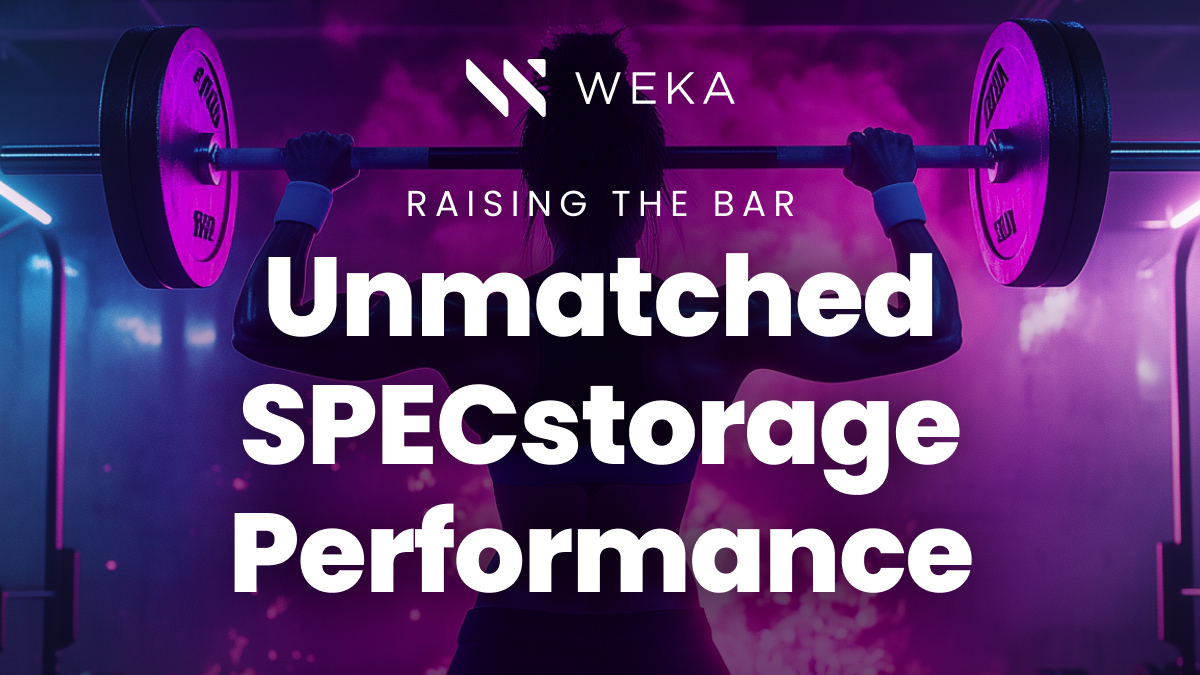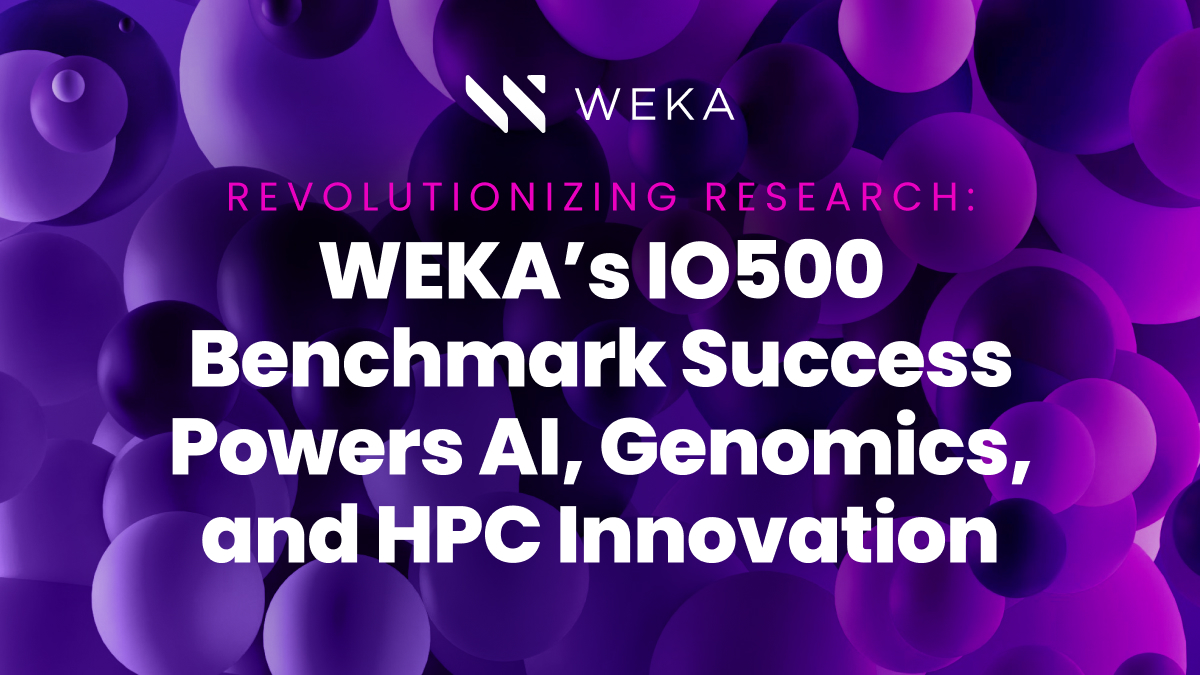Accelerate EDA Workloads with WEKA on Azure: The Fastest Data Platform in the Cloud

In the competitive landscape of the semiconductor industry, Electronic Design Automation (EDA) firms are constantly striving to accelerate their Time to Market (TTM). Completing critical tasks such as chip design validation and tape-out processes is essential not only for maintaining a competitive edge but also for optimizing costs.
Central to achieving these objectives is a storage solution that delivers exceptional speed, scalability, and reliability. The WEKA Data Platform on Azure emerges as the premier choice, achieving the #1 Cloud Result for EDA in the SPEC Storage 2020 benchmarks—a testament to its outstanding performance and robust architecture.
The Significance of SPEC Storage 2020 Benchmark
The SPEC Storage 2020 Benchmark is widely recognized as the gold standard for evaluating storage performance in diverse and demanding environments. Developed by the Standard Performance Evaluation Corporation (SPEC), it provides a comprehensive and objective assessment of storage systems based on real-world workloads and stringent performance criteria. The benchmark encompasses a variety of scenarios, including mixed I/O operations, large data transfers, and high concurrency levels, ensuring that solutions are tested for both their raw performance and their ability to maintain consistency under pressure.
Achieving top rankings in SPEC Storage 2020 signifies that a storage solution not only meets but exceeds industry expectations, making it a trusted reference for organizations seeking reliable and high-performance storage options. WEKA on Azure’s exceptional performance in this benchmark underscores its capability to deliver superior results, reinforcing its position as the leading choice for EDA workloads.
SPEC Storage 2020 Benchmark Results
WEKA on Azure has set a new standard in storage performance for EDA workloads, achieving the #1 Cloud Result for EDA in the SPEC Storage 2020 benchmarks. These results highlight WEKA’s capability to manage demanding EDA tasks, ensuring rapid processing and minimal latency even under heavy loads.
WEKA on Azure EDA Frontend Workload
In the EDA Frontend workload, file operations such as read (30%), mmap read (8%), write (7%), mmap write (15%), and others like mkdir and stat reflect the distribution of various file operations typical in an EDA environment. Each operation’s percentage indicates its frequency, showing a higher emphasis on reading (including memory-mapped reads and writes) and file modification operations, which are common in EDA workflows.
WEKA on Azure EDA Frontend Workload Performance
| Job Sets | Average Latency (msec) | Ops/Sec | MB/Sec |
| 770 | 0.241 | 346519 | 5591 |
| 1540 | 0.266 | 693040 | 11183 |
| 2310 | 0.291 | 1039557 | 16773 |
| 3080 | 0.314 | 1386076 | 22365 |
| 3850 | 0.346 | 1732595 | 27956 |
| 4620 | 0.374 | 2079114 | 33548 |
| 5390 | 0.405 | 2425636 | 39139 |
| 6160 | 0.476 | 2772157 | 44729 |
| 6930 | 0.647 | 3118679 | 50325 |
| 7700 | 5.284 | 3465194 | 55916 |
Table 2: EDA Frontend Workload Performance illustrating latency and operations per second across varying Procs.
Highlights:
- Exceptional Responsiveness: Maintains an average latency of 0.272 msec up to 20,790 Procs, significantly below the WEKA – Azure Public Cloud Reference‘s Overall Response Time of 0.65 msec in the SPEC Storage 2020 benchmark.
- High Throughput: Handles up to 2,310,085.7 Ops/Sec, ensuring seamless execution of intensive frontend EDA applications.
- Benchmark Leadership: Achieves the highest performance metrics in the SPEC Storage 2020 benchmarks for EDA workloads, solidifying its position as the top cloud solution.
WEKA on Azure EDA Backend Workload
In this EDA Backend workload, read and write operations are predominant, with read operations taking up 50% and write operations 50%.
Unlike the frontend workload, there are no mmap or append operations here, which indicates that the backend is focused on straightforward read and write tasks. Additional operations like stat, unlink, and stats are absent, simplifying the file operation distribution for streamlined processing.
WEKA on Azure EDA Blended Workload
The EDA Blended Workload represents a combination of both EDA Frontend and EDA Backend workloads to simulate a comprehensive, end-to-end storage demand profile for Electronic Design Automation (EDA) applications.
By blending these workloads, the EDA Blended Workload provides a balanced simulation that encompasses the distinct requirements of frontend user interactions (smaller, varied operations) and backend processing (larger, sequential data handling).
WEKA on Azure EDA Blended Workload Performance
| Job Sets | Average Latency (msec) | Ops/Sec | MB/Sec |
| 770 | 0.241 | 346519 | 5591 |
| 1540 | 0.266 | 693040 | 11183 |
| 2310 | 0.291 | 1039557 | 16773 |
| 3080 | 0.314 | 1386076 | 22365 |
| 3850 | 0.346 | 1732595 | 27956 |
| 4620 | 0.374 | 2079114 | 33548 |
| 5390 | 0.405 | 2425636 | 39139 |
| 6160 | 0.476 | 2772157 | 44729 |
| 6930 | 0.647 | 3118679 | 50325 |
| 7700 | 5.284 | 3465194 | 55916 |
Table 1: EDA Blended Workload Performance showcasing latency, operations per second, and throughput across varying Job Sets.
Highlights:
- Low Latency: Maintains an average latency of 0.647 msec up to 6,930 Job Sets, aligning closely with the WEKA – Azure Public Cloud Reference‘s Overall Response Time of 0.65 msec in the SPEC Storage 2020 benchmark.
- High Throughput: Achieves up to 3,465,194 Ops/Sec and 55,916 MB/Sec, displaying exceptional scalability.
- Top Ranking: Secures the #1 Cloud Result for EDA in the SPEC Storage 2020 benchmarks, demonstrating unmatched performance in cloud-based EDA workloads.

Figure 1: WEKA on Azure deployment
Why WEKA on Azure is the Best Choice for EDA Workloads
1. Industry-Leading Performance
WEKA on Azure’s #1 Cloud Result for EDA in the SPEC Storage 2020 benchmarks underscore its ability to handle the most demanding EDA workloads. Whether it’s maintaining ultra-low latency or achieving unprecedented throughput, WEKA on Azure consistently outperforms traditional storage solutions, including Azure NetApp Files.
2. Superior Scalability and Efficiency
With the capability to manage millions of operations per second and deliver high throughput, WEKA on Azure ensures that EDA firms can scale their operations effortlessly. This scalability is crucial for handling extensive chip design and validation processes without compromising on performance.
3. Optimized for EDA Demands
EDA workloads require storage solutions that support high file counts, large capacities, and numerous parallel operations across thousands of client workstations. WEKA on Azure meets these demands with its robust, software-defined architecture, ensuring that critical tasks like testing and validation are expedited. This efficiency not only reduces licensing costs but also accelerates the time to market for the latest semiconductor innovations.
4. Proven Reliability and Simplicity
Achieving the top spot in SPEC Storage 2020 benchmarks is a testament to WEKA on Azure’s reliability and performance consistency. Additionally, its single namespace/mount point simplifies performance management at scale, eliminating the complexities associated with managing multiple volumes.
Conclusion
In the competitive arena of the semiconductor industry, where innovation and speed are paramount, WEKA on Azure stands out as the optimal storage solution for EDA workloads. Its unmatched performance, validated by the #1 Cloud Result in SPEC Storage 2020, ensures that EDA firms can achieve rapid time to market, efficient license utilization, and scalable operations without compromising on responsiveness or throughput.
For EDA professionals seeking a storage solution that not only meets but exceeds industry benchmarks, WEKA on Azure is the best-in-class choice. Empower your organization to push the boundaries of semiconductor innovation with the pinnacle of EDA storage performance.
Experience the unparalleled performance of WEKA on Azure for your EDA workloads. To learn more about WEKA on Azure for your AI and HPC workloads visit our webpage, or contact us.





